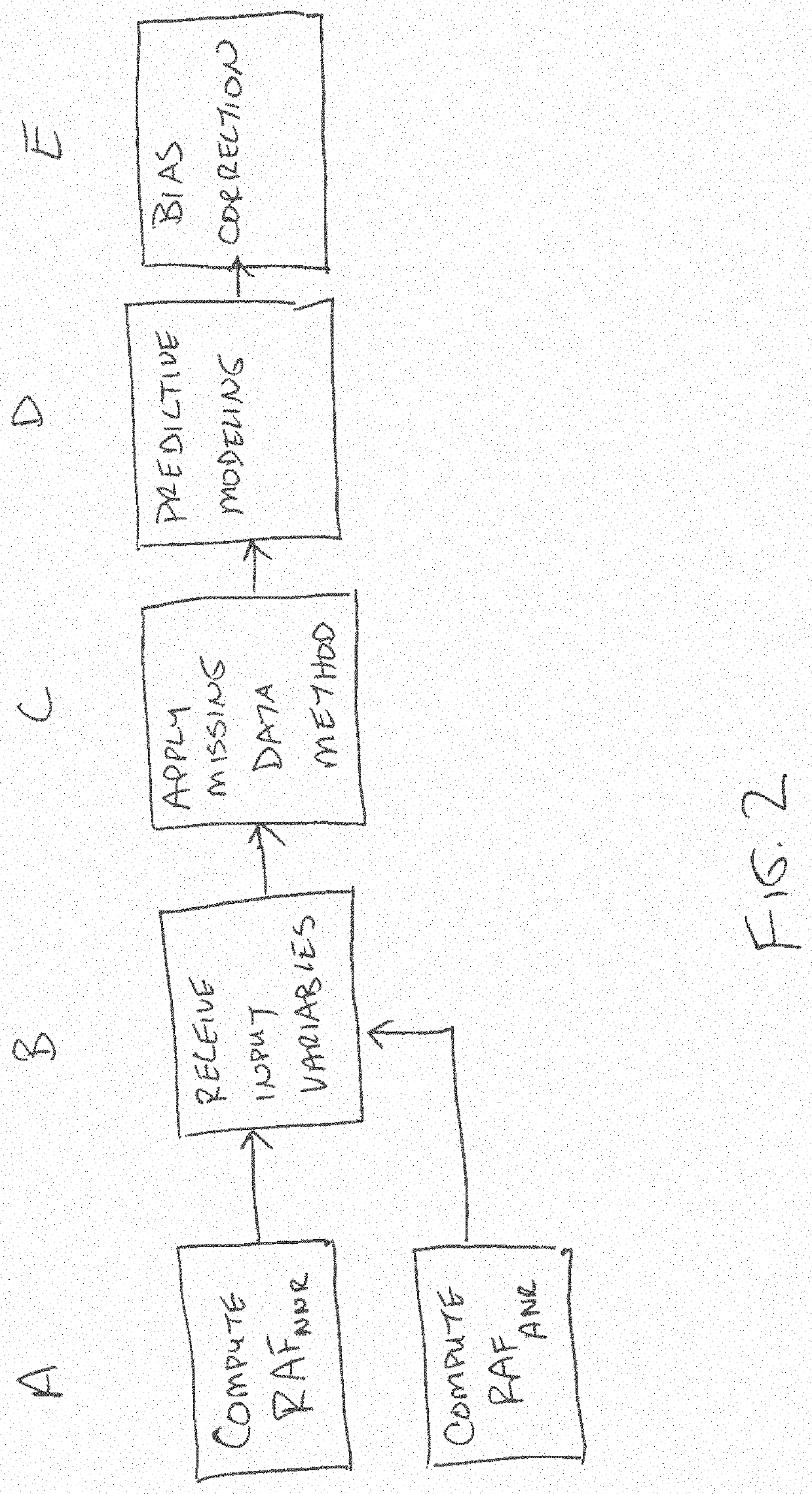System and methods for enhanced risk adjustment factor prediction
a risk adjustment factor and enhanced technology, applied in the field of enhanced risk adjustment factor prediction, can solve the problems of insufficient prediction of future possible healthcare events, limited input of past services, and short dueness of current frameworks for determining raf scores and processing appropriate payments, so as to reduce healthcare costs
- Summary
- Abstract
- Description
- Claims
- Application Information
AI Technical Summary
Benefits of technology
Problems solved by technology
Method used
Image
Examples
Embodiment Construction
[0021]Reference will now be made in detail to exemplary embodiments which are illustrated in the accompanying drawings, wherein like reference numerals refer to like elements throughout. In this regard, the exemplary embodiments may have different forms and may not be construed as being limited to the descriptions set forth herein.
[0022]It will be understood that the terms “include,”“including”, “comprise, and / or “comprising,” when used in this specification, specify the presence of stated features, integers, steps, operations, elements, and / or components, but do not preclude the presence or addition of one or more other features, integers, steps, operations, elements, components, and / or groups thereof.
[0023]It will be further understood that, although the terms “first,”“second,”“third,” etc., may be used herein to describe various elements, components, regions, layers and / or sections, these elements, components, regions, layers and / or sections may not be limited by these terms. The...
PUM
 Login to View More
Login to View More Abstract
Description
Claims
Application Information
 Login to View More
Login to View More - R&D
- Intellectual Property
- Life Sciences
- Materials
- Tech Scout
- Unparalleled Data Quality
- Higher Quality Content
- 60% Fewer Hallucinations
Browse by: Latest US Patents, China's latest patents, Technical Efficacy Thesaurus, Application Domain, Technology Topic, Popular Technical Reports.
© 2025 PatSnap. All rights reserved.Legal|Privacy policy|Modern Slavery Act Transparency Statement|Sitemap|About US| Contact US: help@patsnap.com



